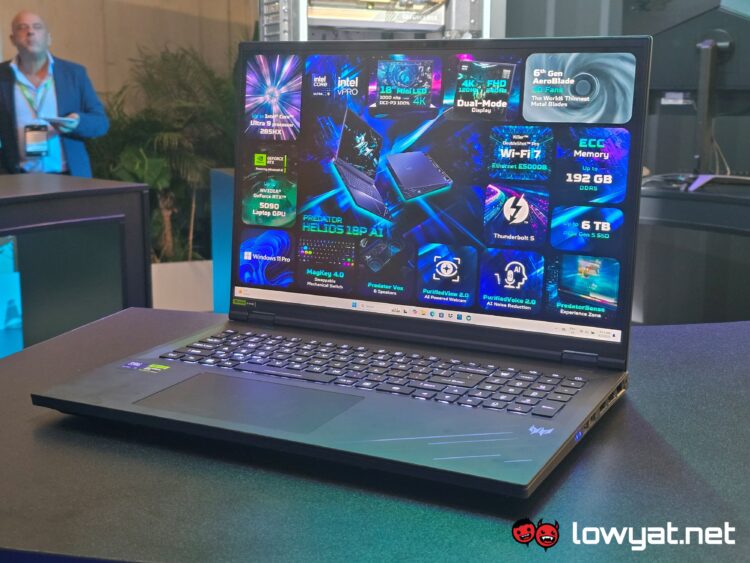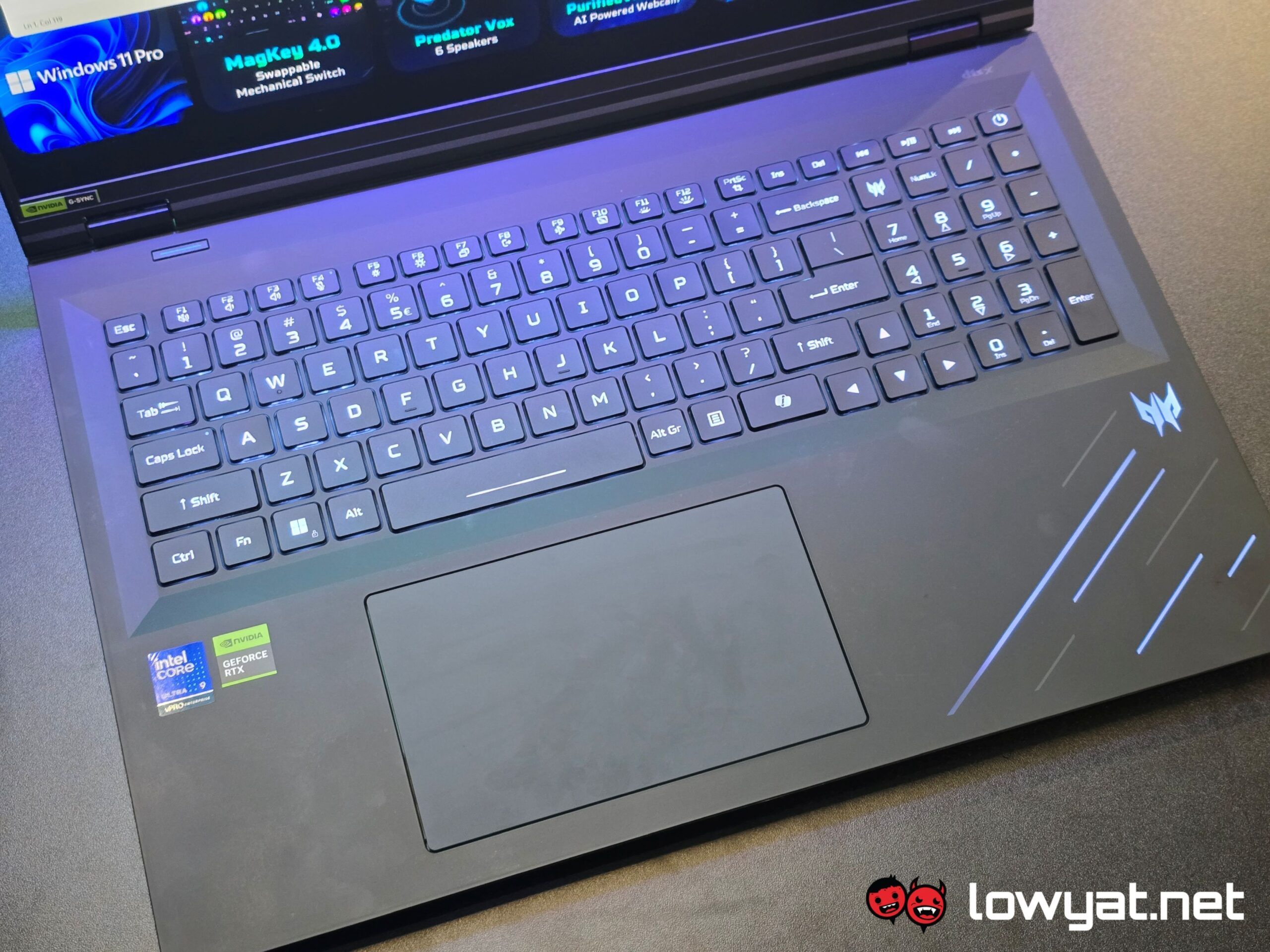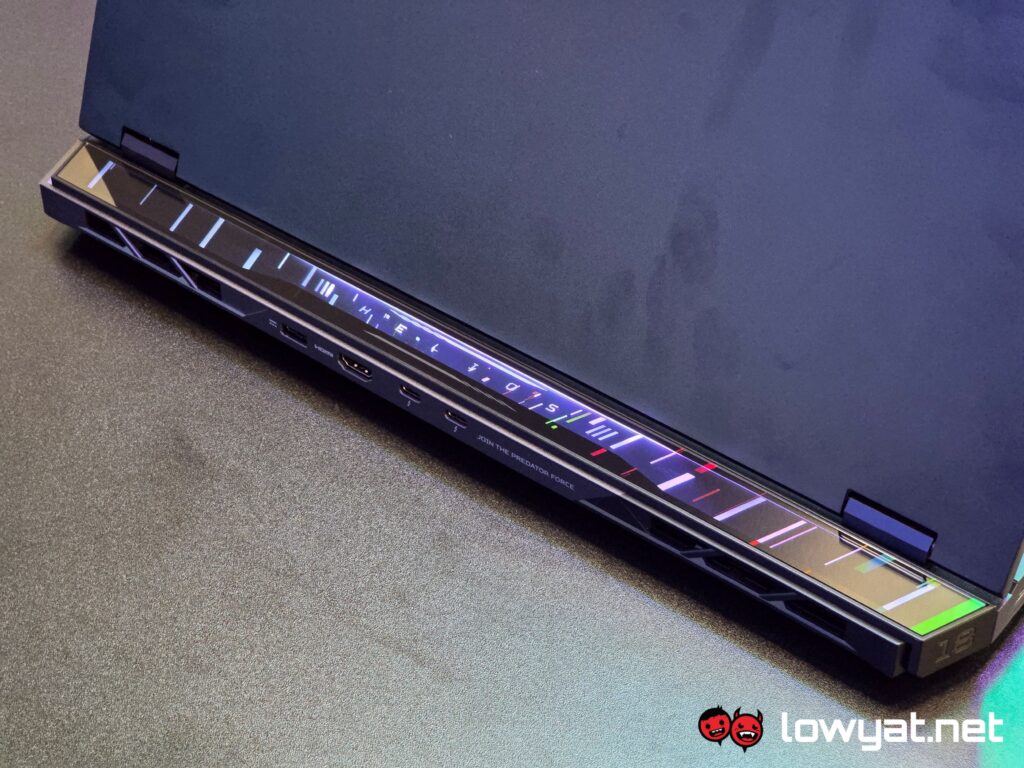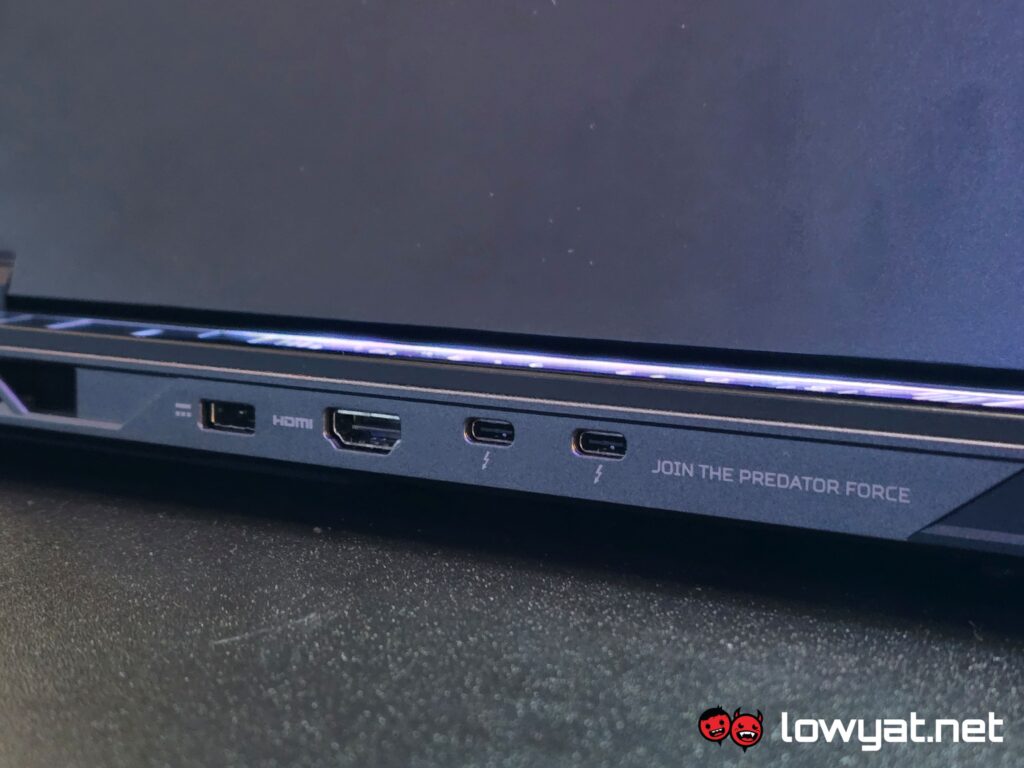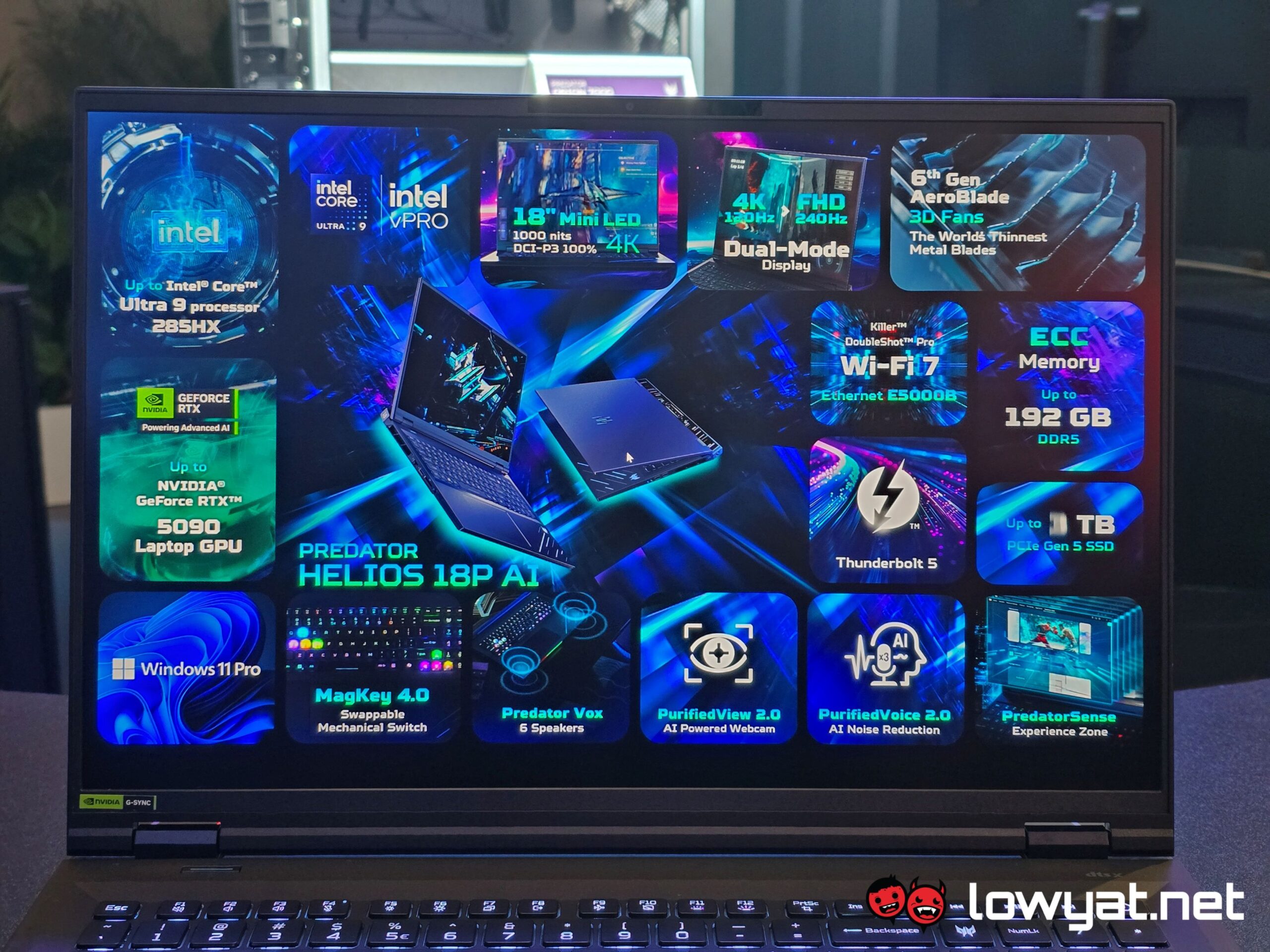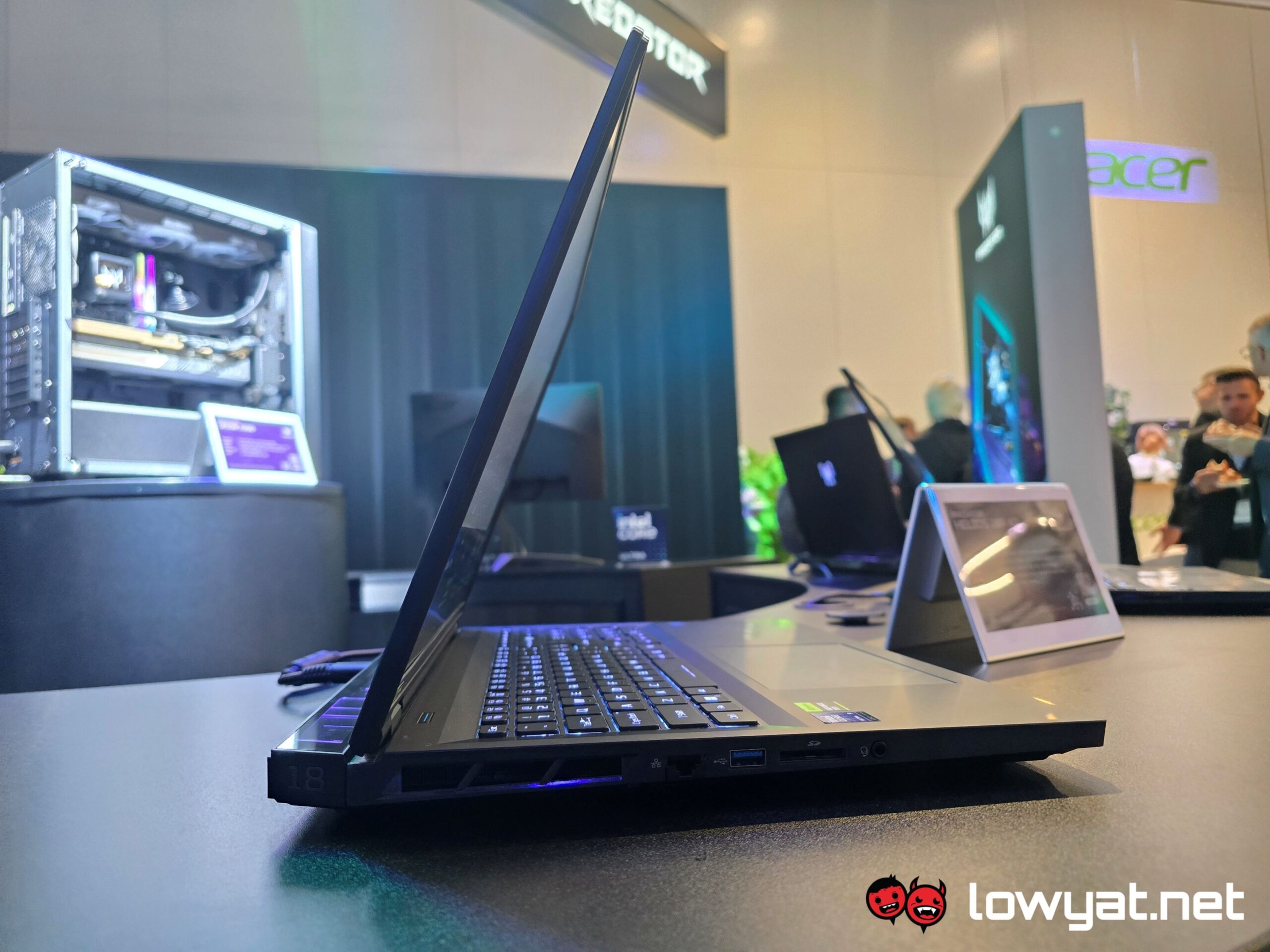Acer’s Predator laptop lineup, much like other enthusiast-class, gaming-grade laptops of its rivals, follow the same design template: aggressive looking enough on the outside, while also staying high-octane enough with whatever modern hardware is available. The Predator Helios 18P AI ticks off those boxes, to some degree.
Design-wise, I can see why Acer went with the supercar-inspired aesthetics: it screams out for attention, and with the extended rear, it looks and feels solid. Not only that, Acer also kept the majority of I/O (the important ones, at least) at the back. That’s a plus point in my books.
At 18-inches, there is enough room for Acer to fit the full keyboard into the base. The learning curve required when shifting from tenkeyless to this form factor notwithstanding, the keys feel linear with just a scooch of tactile, the latter kicking in when you’ve fully depressed the keys for full actuation.
There’s the 4K+ display of the Helios 18P AI but sadly, beyond the specs page running in the background, there weren’t any games on it that I could use to really give it the beans, however brief that would have been. But, as with all OLED panels, those contrasts and colours really scream at your face.
Speaking of hardware, this is where things feel a little odd. The Core Ultra 9 285HX CPU I get, as with the possibility to fit up to an NVIDIA GeForce RTX 5090 inside it. But to fit ECC memory as the defacto component of choice…well, it doesn’t raise alarm bells in my head but it sure does make me wonder why bother, especially when you could easily just go with more consumer-ready options. I mean, the brand uses Biwin as its OEM for storage and memory, hence the curiosity.
Again, there were no games installed on the Helios 18P AI I was using, so sadly, I couldn’t really test their prowess. On a side note, I honestly wish Acer would have considered launching a Predator Helios alternative with an AMD Ryzen AI chip but sadly, that’s unlikely to happen anytime soon.
Acer hasn’t said when the Helios 18P AI will be coming into Malaysia, but when it does, I can imagine it costing upwards of RM20,000 to start. And that’s assuming the brand plans on releasing more than one SKU.

